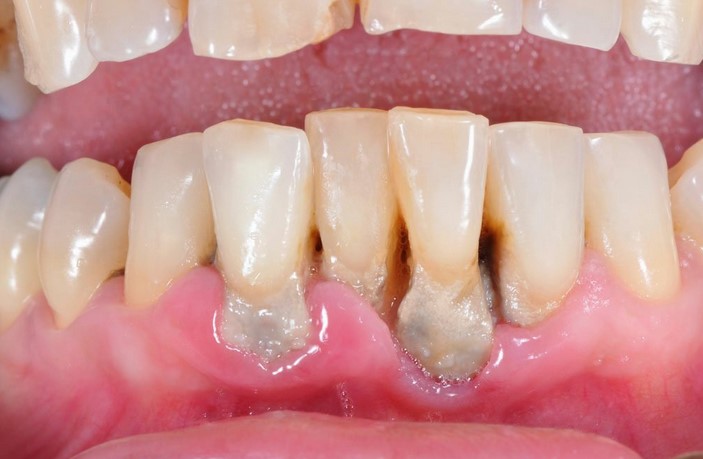
Gum disease, also known as periodontal disease, affects a substantial portion of the global population. It’s characterized by inflammation and infection of the gums and supporting structures of the teeth, and if left untreated, it can lead to tooth loss and other serious health issues. However, recent advancements in dental research have shed light on the potential for gum regrowth – a promising avenue for restoring gum health and preventing further complications. In this article, we delve into the science behind gum regrowth, exploring the processes involved and the implications for dental care.
Understanding Gum Disease and Its Consequences
Before delving into gum regrowth, it’s crucial to comprehend the impact of gum disease on oral health. Gum disease typically begins as gingivitis – the inflammation of the gums due to plaque buildup. If left untreated, it can progress to periodontitis, a more severe form of the disease that affects the supporting structures of the teeth, including the bone. As periodontitis advances, it can lead to tooth mobility and even tooth loss.
Gum disease is primarily caused by bacterial infection, specifically the accumulation of bacterial plaque along the gumline. Plaque harbors harmful bacteria that release toxins, leading to inflammation and tissue damage. The immune system responds by attacking the bacteria, but this can also cause collateral damage to the surrounding tissues.
The Potential of Gum Regrowth
Traditionally, the treatment for advanced gum disease involves deep cleaning procedures such as scaling and root planing, which aim to remove plaque and tartar from below the gumline. In more severe cases, surgical interventions may be necessary to reduce pocket depths and restore the health of the gum tissue. However, these treatments are often focused on managing the disease rather than reversing its effects.
Recent research has shown that regenerating gum tissue could be a transformative approach to treating gum disease. Scientists have been investigating various techniques and therapies to stimulate gum tissue regrowth, aiming to repair the damage caused by the disease and potentially reverse the effects of periodontitis.
Stem Cells and Tissue Engineering
One avenue of research involves harnessing the potential of stem cells. Stem cells are undifferentiated cells that have the remarkable ability to transform into different cell types, including those found in gum tissue. Researchers are exploring ways to isolate and cultivate stem cells from a patient’s own body, then implanting them in the damaged gum area. This approach holds promise for promoting tissue regeneration and repairing the damage caused by gum disease.
Tissue engineering is another exciting area of research in gum regrowth. Scientists are developing biocompatible scaffolds that can be implanted in the affected areas. These scaffolds provide a framework for cells to grow and organize themselves into functional tissue. By combining these scaffolds with growth factors and stem cells, researchers hope to stimulate the regeneration of gum tissue and restore oral health.
Growth Factors and Signaling Molecules
Growth factors and signaling molecules play a pivotal role in the body’s natural healing processes. Researchers are investigating how these molecules can be utilized to stimulate the regrowth of gum tissue. For instance, Platelet-Derived Growth Factor (PDGF) and Fibroblast Growth Factor (FGF) are being studied for their potential to accelerate tissue repair and regeneration. These growth factors can attract cells to the damaged area and promote their proliferation, aiding in the healing process.
Challenges and Considerations
While the potential for gum regrowth is exciting, there are several challenges that researchers must address. One significant challenge is ensuring that the regenerated tissue integrates seamlessly with the existing gum tissue and provides functional support to the teeth. Additionally, the immune response to the regenerated tissue must be carefully considered to prevent rejection or adverse reactions.
Another consideration is the timing of the intervention. Gum disease can lead to irreversible damage if left untreated for too long. Therefore, researchers must determine the optimal stage at which to initiate regenerative treatments to achieve the best outcomes.
The Road Ahead
The science behind gum regrowth holds immense promise for revolutionizing the treatment of gum disease and restoring oral health. As research in this field continues to progress, we can expect to see more refined techniques and therapies that offer patients a chance to not only manage gum disease but also to reverse its effects. However, it’s important to note that while these advancements are exciting, maintaining good oral hygiene practices and regular dental check-ups remain essential for preventing gum disease in the first place.
In conclusion, the science of gum regrowth represents a new frontier in dental care. With ongoing research into stem cells, tissue engineering, growth factors, and signaling molecules, there is a growing potential to restore gum health and prevent the severe consequences of gum disease. As technology and understanding evolve, we may witness a paradigm shift in how we approach the treatment of gum disease – from managing its progression to actively promoting tissue regeneration and gum health.